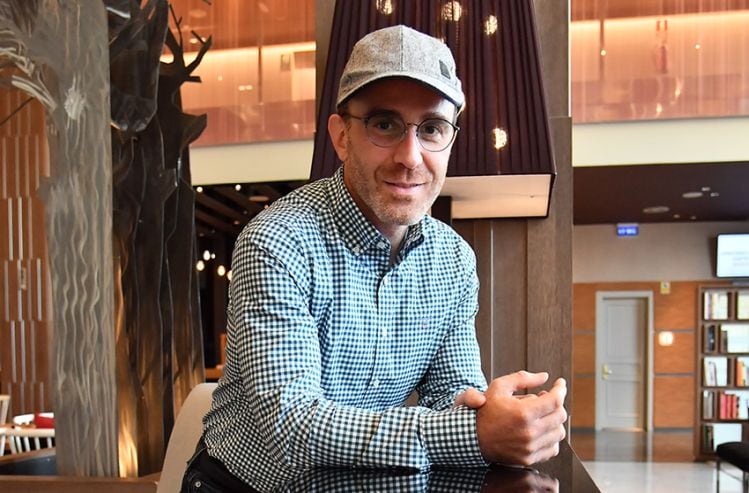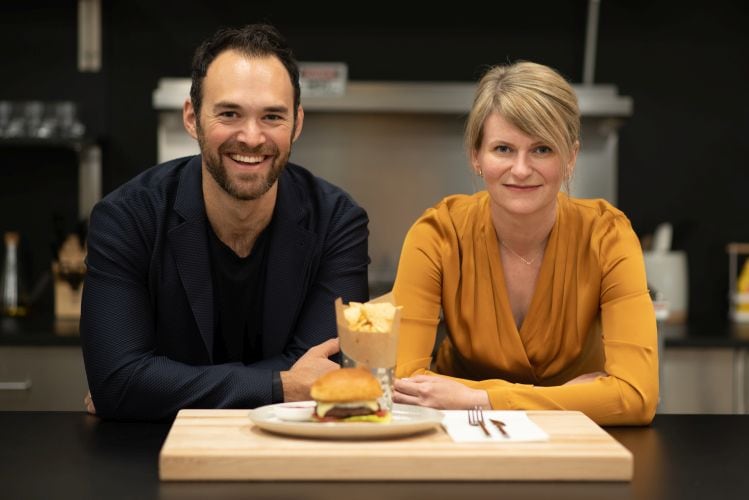One of the top-funded players in the nascent cultivated meat space - raising $347m in its series B round last year – Future Meat deploys Non GMO technology developed by Professor Nahmias that it claims helps it achieve higher-density cell cultures and more efficient use of media than rivals in the nascent space.
“Future Meat works very quickly and really efficiently and has gone further with this technology in a really short period of time than I ever would have dreamed possible,” said Johnson-Hoffman, who was speaking to FoodNavigator-USA after unveiling the company’s latest product: cultivated lamb (see box below).
“Our current plan is to launch here in the US with non-breaded chicken in multiple formats, but we're working with partners and potential partners around the world to look at markets that may be of interest, and where regulators may be moving more quickly," added Johnson-Hoffman, who joined the Israeli startup as its new CEO in February.
"We anticipate launching in foodservice and then as volumes and capacities increase, we can extend our distribution through retail as well.”
An ‘expensive product that half delivers’ will not cut it
But why will consumers buy cultivated meat, something which initially at least, is likely to be more expensive, may be not quite the same as the real thing, and which may not obviously appear any healthier?
Acknowledging that an “expensive product that half delivers” will not cut it, the novelty factor may well drive trial in the first instance, but taste, price, and convenience are what will keep consumers coming back, said Johnson-Hoffman, who previously held senior management roles at Cargill and OSI Group, so knows a thing or two about running large-scale conventional meat operations.
“Our mission is to ensure that when they try it, they have such a great sensory experience, that they crave it and want to go back for more. But cultivated meats also have to fit into consumers’ budgets, so we'll be working tirelessly until we get to price parity, if not better, and we're already pretty close. Price parity has to be the goal.”
Cultivated lamb
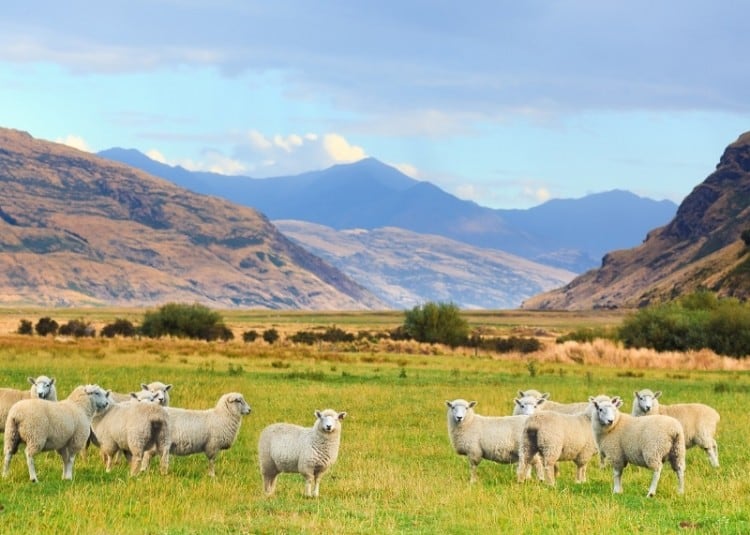
Future Meat Technologies has produced its first cultivated lamb from fibroblast cells isolated from Awassi sheep, which “looks, cooks, and tastes like conventional ground lamb meat, making it ideal for burgers, kebabs, and more.”
"Since lamb has a uniquely distinct flavor, it is very clear if a cultivated substitute is on or off the mark,” said general manager Michael Lenahan.
“The reason Future Meat’s cultivated lamb is indistinguishable from conventional lamb is because it is, first and foremost, real meat. It sizzles, sears and tastes just like people expect, it’s amazing.”
Antibiotics and pathogens
As for purchase drivers, says the company (which conducted research on this last year), these will likely vary by market, with the first wave likely buying out of curiosity (the novelty factor). After that, health may be higher up the agenda than sustainability for the average consumer, at least to begin with, although not strictly in terms of nutrition (cell-cultured meat, after all, makes a virtue of being regular meat, just made in a different way).
“We all have different health concerns," said Johnson-Hoffman.
"Some people want to make sure that the foods they eat are free from unnecessary antibiotic usage. Cultivated meat is also a great solution for people concerned about foodborne illness, particularly pathogens that are traditionally associated with animal protein production from live animals, so I think that cultivated meat will be the marker of quality for consumers.
“I think the need for a new solution for protein production has been reinforced by all kinds of events over the last several years. The pandemic told us that we needed to look again at how we were producing and delivering meats to people around the world.”
She added: “The recent news about the [lackluster] performance of plant-based meat alternatives, has also told us we need to continue to innovate in this space. And what I'm seeing is growing excitement around the reality of cultivated meats as a solution to a number of those problems.”
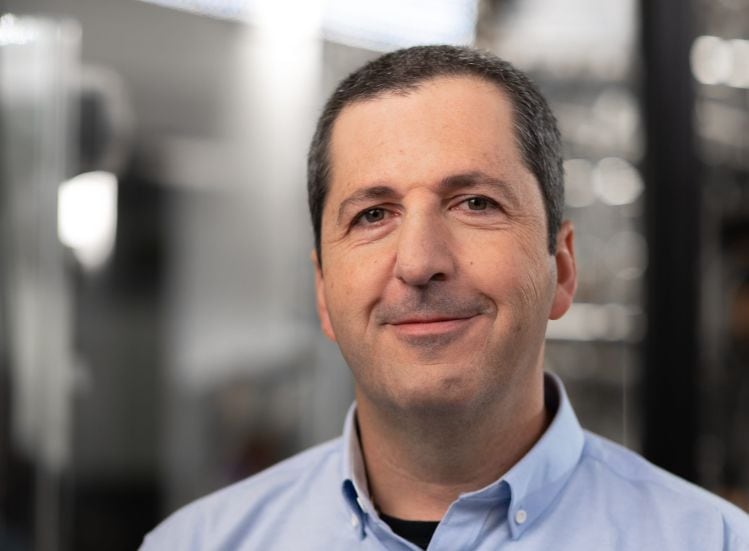
Animal-component-free, no genetic modification
While growing meat from cells in bioreactors instead of living breathing animals should logically be more efficient, as resources are spent on growing only the cells that make up the meat product rather than keeping an animal alive, firms attempting to do this at scale are operating in uncharted territory.
However, Future Meat has made significant progress on achieving higher-density cell cultures and more efficient use of media via a proprietary system that allows for media recycling with a dialyzer that filters out toxic metabolites and replenishes nutrients, claimed Prof. Nahmias, who said Future Meat can produce cultivated meat from fibroblast cells without the use of animal serum or genetic modification.
“Fibroblasts can spontaneously immortalize [or proliferate indefinitely, so you don’t have to keep going back to the source] without genetic modifications, making our product uniquely non-GMO, in contrast to some others in the field.”
Future Meat effectively keeps passaging cells until they immortalize, with the process involving “epigenetic and chromosomal rearrangement rather than mutation," he explained.
'Fibroblasts are quite flexible, and we developed efficient processes to differentiate them into fat and muscle cells'
But how is Future Meat making muscle and fat from fibroblasts, cells that contribute to the formation of connective tissue?
"Fibroblasts are quite flexible, and we developed efficient processes to differentiate them into fat and muscle cells," said Prof. Nahmias.
"The biological process is direct, and does not require reprogramming or other genetic interventions. Fat is the most important cell type to make for the sensory experience of the final product, and our process to produce these cells takes less than 24 hours and has an efficiency of over 85%."
Proprietary extrusion process
Unlike fellow startup Aleph Farms, which is using tissue engineering techniques to make thin steaks by co-culturing cells around edible scaffolding, Future Meat Technologies is growing cells in a bioreactor, harvesting the biomass, and then combining them with plant proteins in a low temperature extrusion process to make finished products on site.
"We are using a proprietary extrusion process on a machine that we designed specifically for the mass production of cultured meat," explained Prof. Nahmias. "Our pilot production process currently run at rates above 100 kg per hour allowing us to rapidly scale the production of cultured meat.
"The extrusion process runs in lower temperatures, allowing the product to develop the Maillard reaction and fatty acid oxidation during the cooking process itself. This would allow customers to fully experience the grilling of meat products at home."
He added: "Future Meat products are very ‘meaty’ and the most common response we get on first tasting is ‘wow’. Texture is coming from a combination of plant and cell proteins. Our proprietary extrusion process weaves both to provide the distinct texture, aroma and flavor of meat."
Asked whether there is a sweet spot for bioreactor size, he did not say what size reactors Future Meat plans to use in its large scale US facility, but added: "Mammalian cells can be grown in vessels up to 25,000 liters in size. Above that size shear forces tear cells apart and pressure differences produce variation in the vessel that would dramatically limit cell growth."
Higher-density cell cultures and more efficient use of animal-component-free media
When it comes to cell culture media, he said, fibroblasts can grow in less expensive growth media than some other cell types, while Future Meat has also "developed a process that allows the cells to grow as single cell suspensions, without carrier beads" for the cells to attach to, enabling higher cell densities, he said. (Read more about its work to reduce media costs HERE.)
"Our incredible R&D team also removed all animal components, including serum proteins, and all other animal ingredients from the culture medium of chicken in December 2021 and for lamb in May 2022. We are extremely excited to be animal component free (ACF) and are getting our supply chain ready for launch."
Asked about the addition of small molecules to the growth media to drive the efficiency of the process, and whether they would present regulatory challenges, he said: "Some of our small molecules are natural, plant-based compounds, that can be readily used in food manufacturing. These natural molecules already dramatically reduced the cost of our culture media."
A final factor contributing to the firm's aggressive cost-reduction program on growth media, he said, is media rejuvenation technology that “allows us to recycle macronutrients and use them to completion rather than waste key nutrients in the process of washing away toxins.”
Cell-cultured meat vs conventional meat
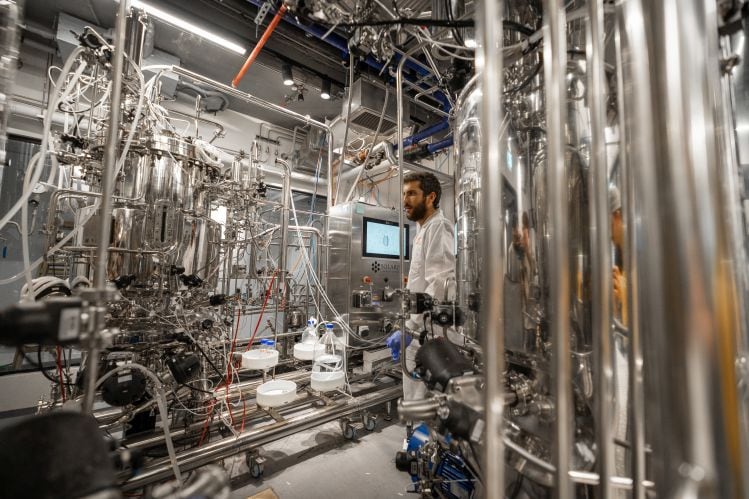
Supporters of cell-cultured meat claim it is better for animals and the environment, but also offers other advantages over traditional meat in that it does not contain bacterial pathogens that pose food safety risks.
Also, they claim, it will not suffer from price/supply volatility risks from animal infectious diseases (avian flu, porcine epidemic diarrheal virus); it requires fewer inputs for a given quantity of meat; and is more controllable and tunable, enabling production of only high-grade meats in quantities dictated by consumer demand, rather than by the biology of the animal.
And while antibiotics may be used in laboratory settings given the number of researchers handling cells, key players say commercial-scale production of cultured meat will be possible without antibiotics, potentially a key selling point given consumers’ concerns about the use of antibiotics in the conventional meat industry and its contribution to antibiotic resistance. Image credit: Future Meat Technologies


